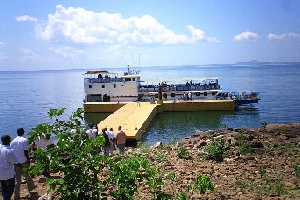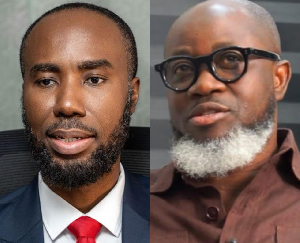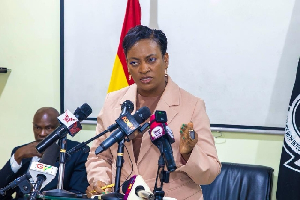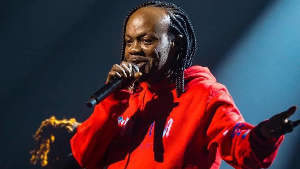The Ashantis go by the accolade Kotoko (the porcupine). They gained this accolade due to their military power and effective strategy in fighting wars since 1701.
Their assertive claim that if a thousand Ashantis are annihilated in war, a thousand more will come to replace those decapitated (wokum apem a, apem beba), likened the Ashantis to the porcupine which releases its sharp long quills or spines and gets replacement almost immediately.
Interestingly the Nzimas also call themselves Kotoko but the reason behind it may probably not be the same as that for the Ashantis.
This article will discuss why Voltarians are called “Number 9”.
The 1948 Population Census of the Gold Coast identified five separate regions: Ashanti, Eastern, Northern, Trans-Volta Togoland and Western. At independence (March 6, 1957), the Gold Coast colony (with the capital as Accra) was split into Eastern and Western Regions, Northern Territory protectorate and the northern parts of TVT became the Northern Region, the remaining parts of TVT plus Anlo and Tongu local council areas of the Gold Coast became Volta Region. On April 4th 1959, the Ashanti Region split into Ashanti and Brong-Ahafo Regions. On July 1, 1960, Northern Region split into Northern and Upper Regions. In 1970, Western Region split into Western and Central Regions. The merger of Sekondi and Takoradi to become a twin city happened in 1971.
Anyone who went to school in the 60s and 70s will remember that Ghana had only eight regions. Yet Volta Region, which had existed since independence, was called “Number 9”. On July 23, 1982, Accra Capital District and Ada Local Council split from Eastern Region to become Greater Accra region. PNDCL 26 was the legislative instrument that finalized the creation of this region. Greater-Accra, became the ninth region of Ghana. Yet the Volta Region retained its nickname of “Number 9”.
The youngest regions in Ghana are the Upper-West and Upper East which were created when the then Upper Region, was divided into two by the PNDC government in 1983. Ghana now had ten regions but the Volta Region continued to be called “Number 9”.
When Brong-Ahafo Region was created in 1958, it left the Ashanti Region completely “landlocked” within Ghana. The region has no borders with the outside world. Some observers say it was a deliberate ploy by Kwame Nkrumah to make it impossible for the Ashanti State, the heartland of the “matemeho” movement and congenital opponents of the CPP, from ever seceding from Ghana.
When Greater-Accra region was created, it left the Eastern Region also “landlocked” within Ghana as it lost its sea border. It is, thus, only the Ashanti and Eastern Regions that share no borders with the outside world. The largest of our regions, Northern Region, is the only one that stretches from one border to another border linking two non-contiguous countries – Côte d’Ivoire and Togo.
But how and why did the Volta Region get the nickname by which some people still call it? The well-known fact must again be stated that the nickname “Number 9” is almost always used in a derogatory sense even if it is often said more as a joke than as a serious insult. The people of the region do not call themselves that and it is obvious they do not quite take much delight in being called so
The derogatory connotation of the Volta nickname may come from its carrying a certain sense of “lateness”. This sense is reinforced by the fact that the region is made largely (but not completely) of the erstwhile Trans-Volta Togoland (TVT) which, until December 1956, was really not an integral part of the Gold Coast. Of the four entities that constituted modern Ghana, the TVT was the last to be formally joined to the Gold Coast (that became Ghana) even though the territory had long been administered by the British from their Accra seat as part of their Gold Coast “possession”.
It wouldn’t matter if the lateness denoted just that – lateness. But “Number 9” carries a sense of backwardness even though the region doesn’t come last on a range of important metrics. It is not the last region to be created, it is not the smallest region, it does not have the smallest population, and it does not have the lowest literacy rate. It does not come last in an alphabetic ordering of the regions of the county. Yet the nickname persists.
A second reason one can hear for the “Number 9” is that, until new codes were introduced in 2010, Volta Region’s code was 09. If you lived outside the region, you dialled 09 to get to the region. But this reason does not seem true. In the 60s, not many people had access to telephones and it is unlikely the region could be identified by its telephone code. Moreover, it is a bit difficult to assign a derogatory connotation to a region because of its telephone code number.
A third reason often heard for the nickname of the region is that the commonest and most popular battery in Ghana throughout the 60s to the 80s was the Eveready battery that was locally produced. It had as symbol a cat coming out of the number 9. Since the Ewes were said to like cat meat, the nickname was given to the region as Number 9. This was just a joke and was not the real reason for the nickname. Number 9 was applied to the entire region not just to the Ewes who constitute only part of the region.
How did the “Number 9” come about? The reason is actually simple and one which, at a time, the people of the region would have been proud of. The first ever Miss Ghana competition was held on 4th March 1957, two days before our independence. It may have been conducted as part of our independence anniversary activities. The candidate representing the TVT (Volta Region?), which had by then become an integral part of the new nation, had the identification number 9. Miss Monica Amekoafia, then 22 years old from Alavanyo in the Volta Region, and representing her region carrying lap number 9, went on to win the entire competition and was crowned as the first ever Miss Ghana. Ghana did not have television then (it wouldn’t come until 1964) and only those present at the function or listening to the radio (if it was broadcast live), would have seen or heard the announcers calling the Volta Region candidate by her lap number. The following day, the newspapers may have carried pictures of the candidates and their regions and their lap numbers.
People may have talked about the contest for days even as they still do today for “Ghana’s Most Beautiful”. Volta Region became identified with “Number 9”. If Ghanaians welcomed the TVT as part of Ghana, there might have been a lot of goodwill around. It was a time we all identified ourselves as Ghanaians. The tribalism we see today was virtually non-existent then. Those who then called Volta Region “Number 9” wouldn’t have done so for any negative reasons. That would come later on…
Today, there are still a few misconceptions about the Volta Region. The most serious is the one which identifies the region with the erstwhile TVT. Today’s Volta Region is not identical with the former German colony of Togoland that the British took over in 1916. The CPP government made sure of that. Take a good look at the regional map of Ghana. The coastal areas of the Volta Region consisting of Anloga, Keta, Aflao, Denu and going up to Peki, Tsibu, Awudome, etc. were never part of the German colony of Togoland but are, today, parts of the Volta Region. These areas had been part of the Gold Coast since about the 1850s. Further north, parts of the present day Northern and Upper East regions were part of the erstwhile TVT but are not, today, part of Volta Region. The CPP government simply took the erstwhile TVT and divided it into several regions and added parts of the erstwhile Gold Coast to some of these regions. Ho, the capital of the erstwhile TVT, retained its status as capital IN the new region named Volta. Just like in the case of the Ashanti and Brong Ahafo regions, there may have been some strategic reasons behind this move. Today, the erstwhile TVT can be found in three different regions. How can they succeed in seceding?
One advantage of the re-demarcation of the regions at the time of our independence is that the Volta Region brought together all the Ewes (those from the Gold Coast and those from TVT) into one region. Similarly, all the Gonjas (those from the Northern territory protectorate and those from TVT) into another region – Northern Region. The new divisions represent a more natural grouping of the peoples living in the areas than the groupings we inherited from colonialism.
If you look at the map of the erstwhile TVT, you will notice that its southern border is a straight line just below Ho. This is one more evidence of the saying that in the scramble for Africa, the colonial powers used “ruler and pencil” to carve out Africa among themselves. The borders of the erstwhile TVT cut the Ewes in two “by heart”. That was why areas like Peki, Tsibu and even Kpeve, whose Ewe likens that of the “northern Ewes” found themselves in the Gold Coast whereas nearby Ho found itself in German Togoland.
German Togoland included the whole of Togo and the erstwhile TVT. The Germans colonized it for some 25 years until the First World War when the British and the French pushed them out of the area as part of their war effort. They then divided the area between themselves. The British administered their part from the Gold Coast.
After the Second World War, the UN mandated the area as a trust territory for the British to?look over. They called it Trans Volta Togoland and added it to the Gold Coast, though as a separate entity. When Gold Coast independence was imminent, the British informed the UN they would not be able to continue administering the territory after Gold Coast became free. It was then that the controversial plebiscite was held and the people of the TVT voted to become part of the Gold Coast and formally did so in December 1956 in time for independence in March 1957. The French, however, continued to administer the French Togoland until they were forced to grant it independence in 1960.
Another misconception of Volta is that it is a region full of Ewes. The Ewes may be the single largest ethnic group in the region but are by no means the only one. North of Hohoe, the last Ewe post, are a myriad of different ethnic groups including Likpe, Nkonya, Buem, Bowiri, Lolobi, Akpafu, Santrokofi all of whose languages are of Guan origin and Akans as well as others in the northernmost parts of the region. It is the only region in the country that can count both native Ewe speakers and native Twi speakers among its bona fide citizens.
Number 9 has been repeated by Ghanaians till today to refer to Voltarians in a derisive and derogatory manner. Those who say it, see Voltarians as backward and the 9th and last region of Ghana. It is often said that when a lie is repeated continuously it gains an element of truth. People have either refused or are unwilling to accept or learn the history of “Number 9”. The Bible states that for lack of knowledge my people perish.
Today, there is a poorly maintained statue of Miss Monica Amekoafia (now deceased) in front of the Post Office in Hohoe in the Volta Region. It commemorates her victory in the beauty pageant of 1957. I wonder how many of Hohoe’s citizens who pass by this statue every day know that it is the young lady’s victory in the year of our independence that is the cause of their region being called “Number 9”.
Columnist: Stephen Atta Owusu
Author: Dark Faces at Crossroads
Email: stephen.owusu@email.com
Opinions of Thursday, 17 November 2016
Columnist: Owusu, Stephen Atta















